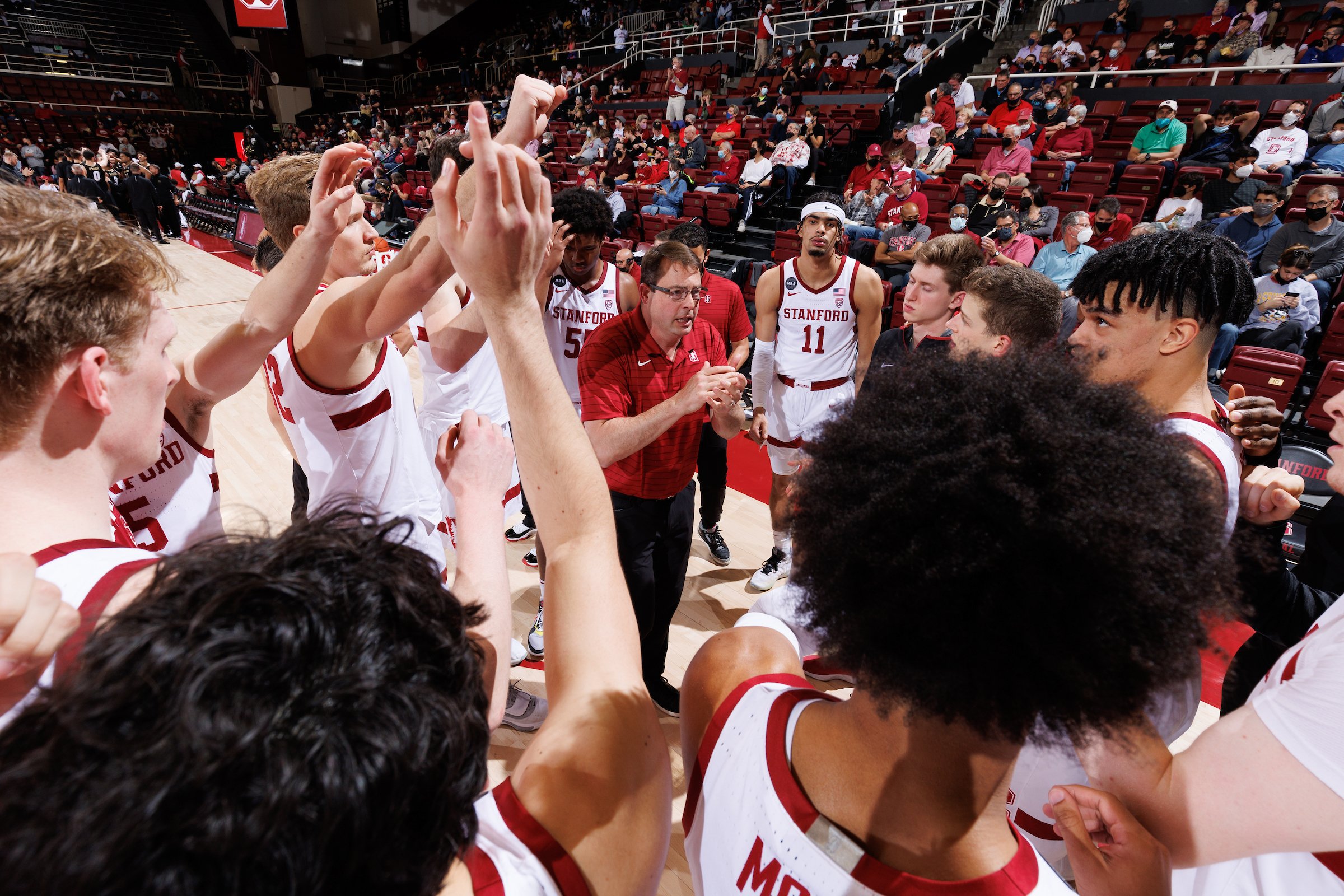Stanford men’s basketball (16-16, 8-12 Pac-12) wrapped up its season in early March with a loss to the No. 2 Arizona Wildcats (33-4, 18-2 Pac-12) in the quarterfinals of the Pac-12 tournament. As a result, Stanford missed out on a postseason run in either the NCAA tournament or the NIT. While this outcome was squarely in line with what many analysts predicted, the team’s lack of postseason past the Pac-12 Tournament is still a disappointment to the team and Stanford fans. But how did it end up this way, and what does the team look like going forward into next season?
At the beginning of the season, Stanford’s non-conference performance had many questioning how the team would fare in Pac-12 play. There were multiple ugly wins against teams with inferior talent, including to Tarleton State and Dartmouth. These ugly wins were also coupled with tough losses against teams such as Santa Clara and Baylor.
These games exposed a lack of offensive consistency that plagued the Cardinal down the stretch of Pac-12 play. In fact, the Cardinal did not have an offensive player who ranked in the top 20 in the Pac-12 in points per game.
While Pac-12 Freshman of the Year forward Harrison Ingram was a bright spot this season, the team needed scorers around him to complement his passing. Forward Oscar Da Silva ’21 was a big scoring presence for the Cardinal last season, but unfortunately, the Cardinal never found someone to fill his interior scoring void. None of Stanford’s interior players displayed the scoring arsenal needed to push Stanford over the top.
On the perimeter this year, junior forward Spencer Jones started off slow, but began to show his premier shooting ability toward the end of the year, putting up 28 points against Arizona in the quarterfinals of the Pac-12 Championship. Jones emerged as the go-to scoring option for Stanford by the end of the year.
While the defense outperformed the offense for most of the season, there were still some glaring issues on the defensive side of the ball. On several occasions, Stanford gave up huge scoring nights to upper echelon big men in the Pac-12 like Arizona center Christian Koloko, Colorado forward Evan Battey and USC forward Isaiah Mobley. The Cardinal were missing a shot-blocking presence that could alter shots at the rim.
While there were high points in the season, such as the win over Wyoming and the sweep of a ranked USC team, these never materialized into a streak of continuous great play. The Cardinal lost seven of their last eight Pac-12 regular season games, including five in a row, and finished with an 8-12 record in conference play.
While roster situations in college basketball are more uncertain than ever before with record numbers of transfers, let’s examine next year’s probable team and discuss what Stanford needs to do to succeed.
Looking forward, the Cardinal will bring in a pair of 6-foot-7 sharpshooters in Ryan Agarwal from Coppell, Texas, and Jaylen Thompson from Oakland, Calif. If both players are able to crack the rotation, they will provide much-needed spacing in Stanford’s motion offense.
In addition, it seems likely that Spencer Jones will return, which will provide Stanford with key senior leadership and a real scoring threat. Both Michael O’Connell and Brandon Angel will become upperclassmen next year and thus likely take on greater responsibilities while on the floor. Look for Angel to emerge as a greater scoring threat next season and O’Connell to take on the primary responsibility of facilitating the offense.
However, the Cardinal will lose senior forward Jaden Delaire, who has been a key player the last two seasons, to the transfer portal. Stanford will also have to await Ingram’s decision to declare for the NBA draft. Ingram is a special player with great intangibles, and losing him would hurt the Cardinal’s chances of reaching the NCAA tournament immensely.
Because of these potential losses, the Cardinal must have people step up at the center position to provide rebounding, scoring and defense. Junior forward James Keefe and freshman center Maxime Raynaud seem like the likely candidates to do this, but they must play better than they did the previous season for Stanford make a run at next year’s tournament.
